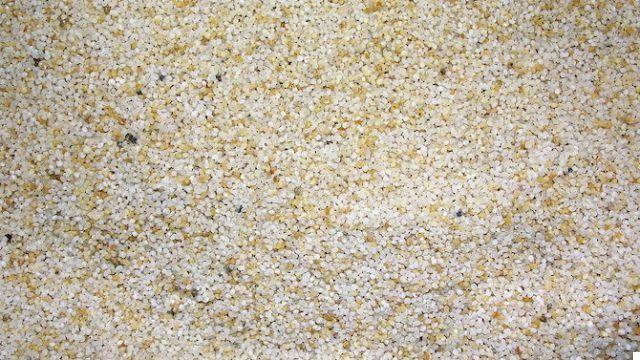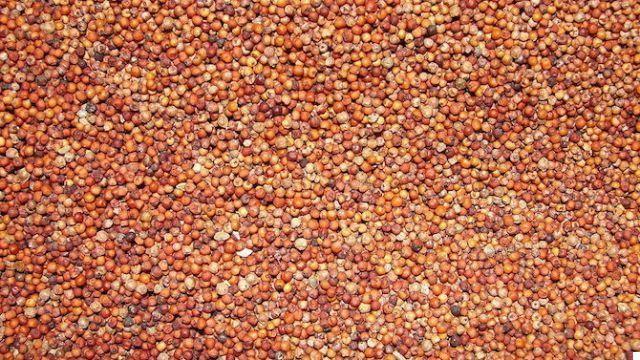Taking a look at some of the more recognized versions of the food pyramid first of all we will notice that at its base there are cereals and cereal derivatives, to be consumed in at least 4 daily portions.
This should be enough to give the measure of their importance in our food life. Their very important role is to provide us with energy, in the form of carbohydrates (i.e. complex sugars).
However, not all cereals and pseudocereals provide energy in the same way and through the same nutritional elements.
Even when we talk about cereals, therefore, it is good to put ourselves in the perspective of one varied diet, which includes the consumption of as many cereals as possible, perhaps according to seasonality.
Another relevant thing is the search, when possible, of species o variety genetically rich and vital, or those do not recklessly select for commercial purposes only (easy reproducibility, high production, homogeneous beans, etc.).
There is in fact an underworld of ancient, rare and, more often than not, unknown cereals, which can revolutionize our eating habits bringing great benefits. Let's find out the kodo and the red mile.
The kodo or varagu: properties and nutritional values
Here is a mile that responds to the scientific name of Paspalum srobiculatum, Better known as mile kodo or varagu.
Originally from East Africa but widely cultivated in India, the Philippines and Southeast Asia, it is a mile resistant to various difficult climatic conditions and has been chosen as one of the potential foods with which to feed poor populations in the near future, thanks to the easy cultivability, To rich in nutrients and productivity (one ton per hectare).
It is considered a ideal substitute for rice and wheat, being, in addition gluten-free. The percentage of protein hovers around the 12% while that of dietary fibers (of excellent quality) even reaches the 35%. Thanks to this high percentage of fiber, it is a food particularly punitive, therefore ideal for diets, rich in iron, calcium and various polyphenols, excellent antioxidants.
Discover the other gluten-free cereals

| By Thamizhpparithi Maari
The red mile or ragi
Another interesting mile, native to the Ethiopian highlands and widespread in Asia, is the red mile or ragi, known as Eleusine Coracana.
Before the advent of modern rice and other commercial cereals imposed by the market, South Asia, especially India, was a large consumer of this cereal, so much so that in the Himalayas there are traces of its domestication dating back to 2000 BC.
In addition to being a cereal easily cultivable even in extreme situations and easily stored after harvesting, this millet is very important as it is excellent source of methionine, melitant amino acid very important for various physiological tasks including the correct functioning of the renal and urogenital apparatus, as well as for the correct management of the intestinal flora and other useful bacteria.
The percentage of protein wanders around8%, That of fiber between 3 and 5%; otherwise this cereal is full of excellent ones starches and B vitamins.

| By Thamizhpparithi Maari
Availability of kodo and red mile
Obtaining these grains can sometimes be difficult, but not impossible. Kodo or varagu is consumed in many African countries, India and Southeast Asia, especially Myanmar and Malaysia, and the Philippines while the red millet or ragi is widely used in Ethiopia and Eritrea, in the Arabian peninsula, in Pakistan, in India, in China, and in all l'Indochina up to Vietnam and Laos.
All this translates into the possibility of finding these unknown cereals on ethnic food stalls who import food from Africa and Asia for all immigrant communities.
They are cheap foods and are not infrequently found on the market organic kodo and red millet. Everyone knows the names: often the kodo is called varagu or even "varagu rice", or varagu rice, not taking into account the fact that it is not a rice but a mile.
The red millet, on the other hand, is often marketed by India, the first producer and exporter in the world; therefore it is easy to find it with the name of yeast o yeast millet, more rarely as red nation o finger nation.
How to use kodo and the red mile
The kodo is sold in whole grains, small very hard ivory-white spherules, which cook rather quickly. Once cooked and well drained, it can very well replace the common rice and cous cous (which moreover resembles at first sight).
It is therefore suitable for salads and to accompany various sauces, although it gives its best when cooked in vegetable and spice soups, in which it releases a thickening starch and its marked and identifying flavor, vaguely reminiscent of sweet walnuts.
The red mile instead it is easier to find in the form of flour. There are several typical dishes that are not too difficult to create and propose starting from red millet flour. In South India the British brought the culture of porridge, made however from the red mile.
This healthy habit of cooking ragi flour in water (but vegetable milks are fine too) until it thickens like a pudding with a faint cocoa flavor, it still persists in many communities.
Millet flour red is also considered ideal for creating gods fermented breads or for pancakes or crepes, especially if stuffed with spices, garlic, onions or some legumes.
Salad recipes with grains and seeds, gluten-free
To learn more:
> All cereals and their properties
> Millet, an energizing cereal


























